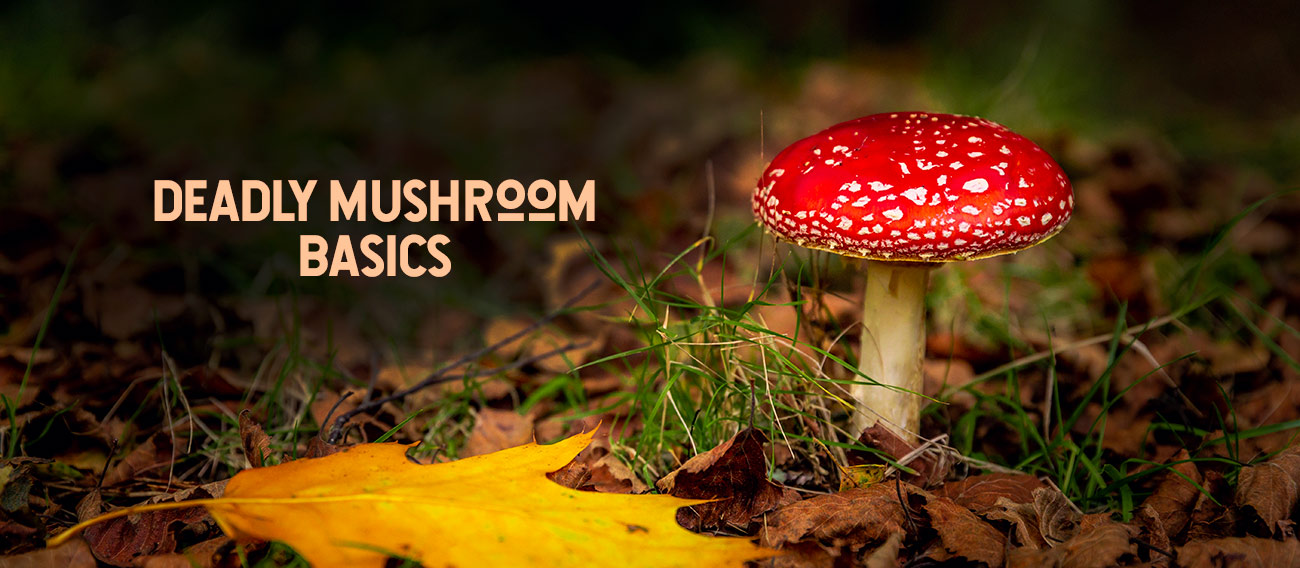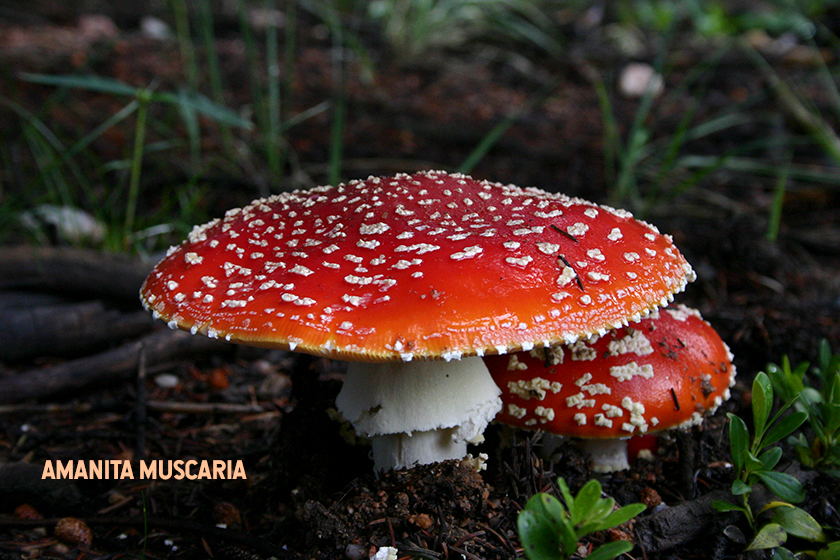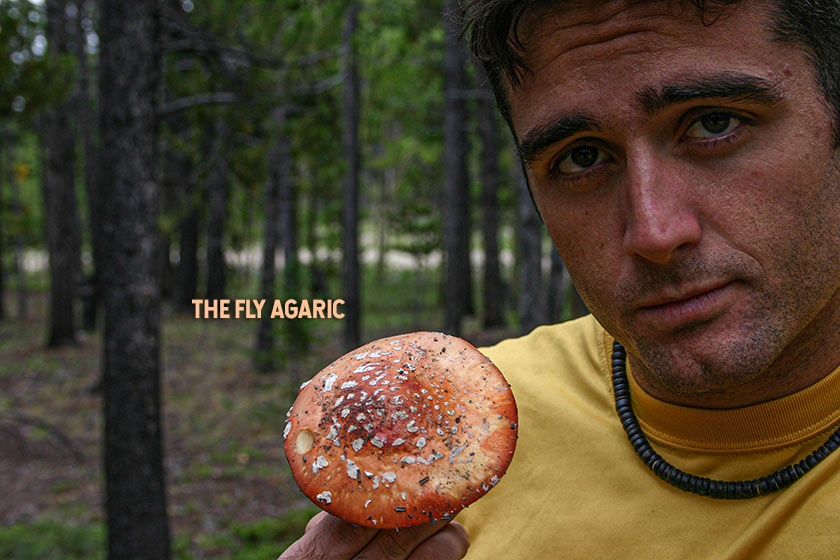Deadly Mushrooms


Unlike the more sensational animals like bears, crocodiles, and sharks (that have entire weeks devoted to them in the media), there are much fewer documentaries about the wonderful world of mushrooms. Maybe that’s why they’re so intriguing to me – like little undiscovered gems in the forest. Most people are aware they exist but know almost nothing about their hidden lives. It’s difficult for people to identify even a few common mushrooms in the forest. That changed for Haley and I one summer when we went on a quest to look for and film some of the world’s most deadly mushrooms.
In our journey to understand the deadly mushrooms, we met up with a few really interesting mycologists – the real mushroom professionals. Every mycologist we met was overly excited about helping us find those deadly ones, but also wanted to fill us with mind-boggling facts about the edible ones they were either growing or picking wild. Stuff like:
- The largest and oldest organism on the planet is a honey mushroom. It covers 3.7 million square meters in Oregon and is estimated to be about 8,650 years old.
- There are 14,00 described species of mushrooms.
- Much like in Avatar, where everything is connected in the forest, fungal mycelium in forests act king of like a neurological network in nature.
- Reindeer love to eat psychoactive mushrooms in the arctic north – which may be how they “fly” at Christmas (more on that later).
With these new facts in mind, we set off to try our own hand at growing these hidden gems. That summer a massive oak branch fell in our backyard, so we decided to use that recently fallen piece of wood to grow some edible shiitakes. We drilled a hundred holes in that branch and seeded them with some purchased mushroom spawn. Over the course of the next 3 years, we watched several “flushes” of big, edible, and quite delicious mushrooms emerge. Because I inoculated this log, I always knew they were edible. As far as foraging wild mushrooms – it took years before I gained enough experience to trust myself enough to identify and eat an edible mushroom I had not seeded myself.
This isn’t a guide to show you how to hunt and eat mushrooms in the wild, though it’s a common practice enjoyed in many places the world over. This guide is here to point out a few of the dangers that might exist with wild mushrooms. If you eat the wrong one, there are some very real consequences. This will become clear as I describe one of the most recognizable of them all. Even if you have never heard of it, I know you would recognize it – the red and white fly agaric.
The Fly Agaric
Amanita muscaria is commonly known as the fly agaric because it was used to collect and kill flies. It’s a big mushroom that has a reddish cap with white flecks. You’ve probably seen it in drawings even if you had no idea what it was called. If you’ve played Mario Brothers or watched The Smurfs, you’ve seen it. It’s that red and white spotted mushroom that helps Mario grow bigger, no doubt a nod to the hallucinogenic properties of this mushroom. The Smurfs live in smurftastic houses that happen to be those very same Amanita mushrooms.

It’s one of the most influential mushrooms in all of mankind. Some have even considered it the original soma, an inspiration for the Hindu religion. Others have suggested that the red and white outfit that modern day Santa Claus wears and the stories of flying reindeer all stem back to rituals with this mushroom in Nordic countries.
But this isn’t the kind of mushroom that you want to eat. In fact, if you eat a couple dozen or more of them, it may kill you. That’s a lot to eat in one sitting, and the repercussions are not ideal. You may experience hallucinations, nausea, vomiting, dizziness and even have a seizure. Fortunately, you can recover fully afterwards if you don’t die. That’s not true for some of the others in our list.

The Death Cap, for instance, looks similar to the fly agaric – distinguished mainly to the untrained eye only in color. This yellow to white mushroom is responsible for half of the deaths from mushroom poisonings. It’s believed to have killed the Roman Emperor Claudius in AD 54 and the Emperor Charles VI in 1740. One single cap has enough toxin to kill two adults.
One of the big problems with death caps is that they taste and look really pleasant. That’s a bad combination if your method of foraging in the forest includes randomly picking mushrooms and popping them in your mouth. Add to that the fact that the symptoms are delayed, and you have a deadly recipe.
At first, you may just have an upset stomach, feel nauseous and vomit a few times. A couple days later this will probably go away, so you might think you’re in the clear – but that’s when the more serious complications can occur. The liver is being destroyed and kidney failure is also likely. Death generally occurs six to sixteen days after poisoning.
In 2012, four people were accidentally poisoned by the death caps when they were served at a New Years dinner party in Canberra, Australia. Everyone was rushed to the hospital. Two died and one had to have a liver transplant.
These aren’t the only mushrooms that can kill you, either. You have mushrooms called webcaps, skullcaps, destroying angels, and deadly dapperlings that can kill you too. Even so, I don’t want you to fear mushrooms – just be smart. So I’ve come up with a few best practices to start you on your way.
Mushroom best Practices
- Don’t Eat Any Mushroom you can’t identify. This is the first and most important rule.
- Don’t trust size and color when you identify mushrooms. Unlike plants and animals, mushrooms vary widely in size and color and identification is often with more subtle characteristics.
- Learn first all of the deadly or toxic mushrooms so that you make sure you’re not ingesting one that will kill you quickly.
- Go on mushroom hikes with professionals or mushroom collectors you trust to help you identify mushrooms. There are incredible mushroom clubs you can be a part of, and the handsoon experience you gain with them will probably be the most valuable. I highly suggest joining a club.
- Start reading and learning about mushrooms. There are lots of great books, and this is a great way to start.
- Experiment eating mushrooms from the grocery store first. This is just a safe way to begin your edible forays. Mushrooms have tremendous health benefits, and you can start without fear of getting poisoned.
Don’t forget that mushrooms are also amazing! Get a book and start looking for them on your next hike. Just don’t randomly pop wild mushrooms in your mouth until you’re a seasoned pro!
Prefer Listening?
If you’d rather listen to this article, I’ve recorded it here to make it as accessible as possible.
A Video on Deadly Mushrooms
Our early UntamedScience team make this video with Tradd Cotter of Mushroom Mountain. It’s a fun look at a mushroom collecting, growing and a few of the deadly ones.
The Destroying Angel
Here is a video we made about the Destroying Angel, one of the deadliest mushrooms in North America.

